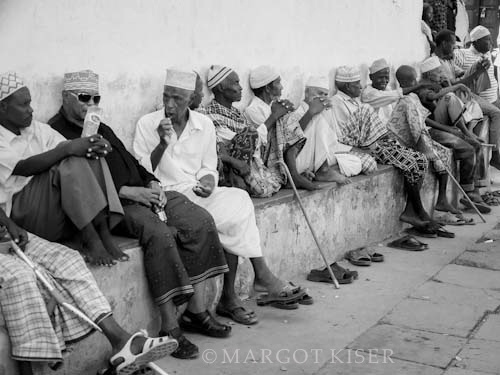Swahili Tribe
The Swahili people (or Waswahili) are an ethnic and cultural group inhabiting the African Great Lakes region. Members mainly reside on the Swahili Coast, in an area encompassing the Zanzibar archipelago, coastal Kenya, the Tanzania seaboard, and northern Mozambique. The name Swahili is derived from the Arabic word Sawahil سواحل, meaning “coasts.” The Swahili speak the Swahili language, which belongs to the Bantu branch of the Niger-Congo family.
The Swahili people originate from Bantu inhabitants of the coast of Southeast Africa, in Kenya, Tanzania and Mozambique. They are mainly united under the mother tongue of Kiswahili, a Bantu language. This also extends to Arab, Persian, and other migrants who reached the coast some believe around the 7th and 8th centuries, providing considerable cultural infusion and numerous loan words from Arabic and Persian. But according to Archaeologist Felix Chami notes the presence of Bantu settlements straddling the Southeast African coast as early as the beginning of the 1st millennium. They evolved gradually from the 6th century onward to accommodate for an increase in trade (mainly with Arab merchants), population growth, and further centralized urbanization; developing into what would later become known as the Swahili City-States.
Culture and Religion
The Arabic culture has had the greatest influence in shaping Swahili traditions. One major legacy of the Arab culture is the prevalence of the Islamic religion among the Swahili people. Islamic traditions govern nearly every aspect of the Swahili tribe’s culture, including food, clothing and lifestyle. Swahili children, for example, must attend Madrassa – religious classes in which they study the Koran and learn the Arabic language – from an early age. Unlike other Kenyan tribes, there are no specific rites of passage for young Swahili men and women.
Marriage marks the transition to adulthood. Swahili marriages are usually arranged by the parents. Though the bride’s parents will normally choose a groom for their daughter, she has the right to refuse her parents choice and select her own groom. Swahili weddings last several days and involve elaborate preparations, ceremonies and activities for both men and women. Only men are allowed in the mosque for the official marriage vows.

Economy
For centuries the Swahili depended greatly on trade from the Indian Ocean. The Swahili have played a vital role as middle men between southeast, central and South Africa, and the outside world. Trade contacts were noted as early as 100 AD. by early Roman writers who visited the Southeast African coast in the 1st century. Trade routes extended from Somalia to Tanzania into modern day Zaire, along which goods were brought to the coasts and were sold to Arab, Indian, and Portuguese traders. Historical and archaeological records attest to Swahilis being prolific maritime merchants and sailors who sailed the Southeast African coastline to lands as far away as Arabia, Persia, Madagascar, India and even China.Chinese pottery and Arabian beads have been found in the ruins of Great Zimbabwe. During the apogee of the Middle Ages, ivory and slaves became a substantial source of revenue. Many captives of the Portuguese sold in Zanzibar ended up in Brazil, which was then a Portuguese colony. Swahili fishermen of today still rely on the ocean to supply their primary source of income. Fish is sold to their inland neighbors in exchange for products of the interior.
Although most Swahili live with living standards far below that of upper hierarchy of the wealthiest nations, the Swahili are generally considered a relatively economically powerful group due to their history of trade. They are comparatively well-off; According to the United Nations, Zanzibar has a 25% higher per capita GDP than the rest of Tanzania. This economic influence has led to the continued spread of their culture and language throughout East Africa.
Arab traders first started plying the coast in their sailing dhows sometime before the 7th century, arriving with the north-east monsoon end sailing home on the south-west monsoon. The main exports were Ivory, tortoiseshell and leopard skins, while items such as glass beads from India and porcelain from as far afield as China found their way here.
After the 7th century Islam became a ://informationcal people are Muslims, although it’s a world away from the puritanical forms of islam which prevail in some places in the Middle East.Swahili subgroups include Bajun, Siyu, Pate, Mvita, Fundi, Shela, Ozi, Vumba and Amu (residents of Lamu).
